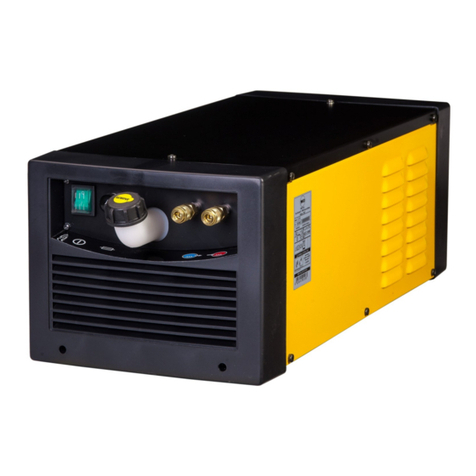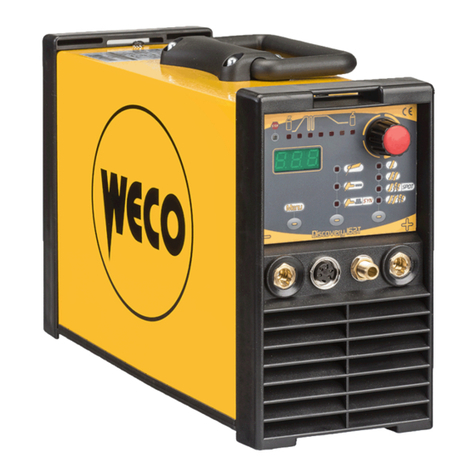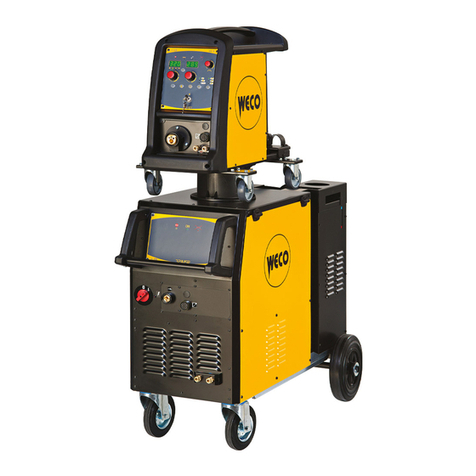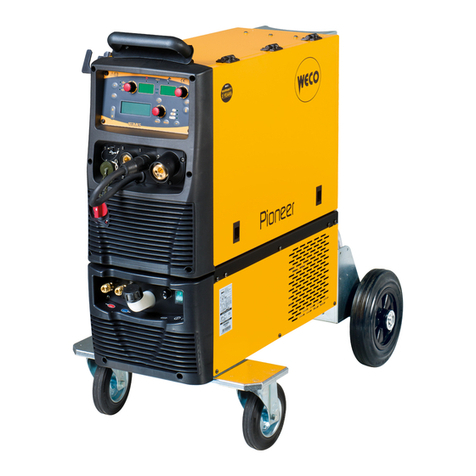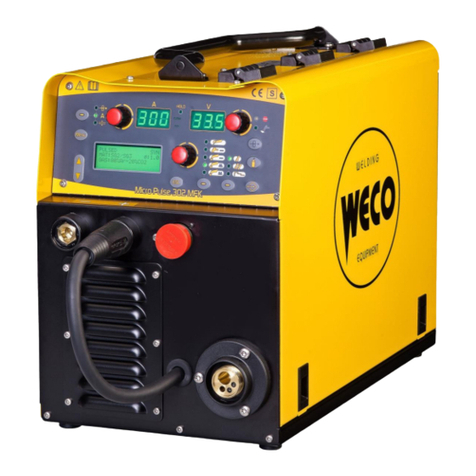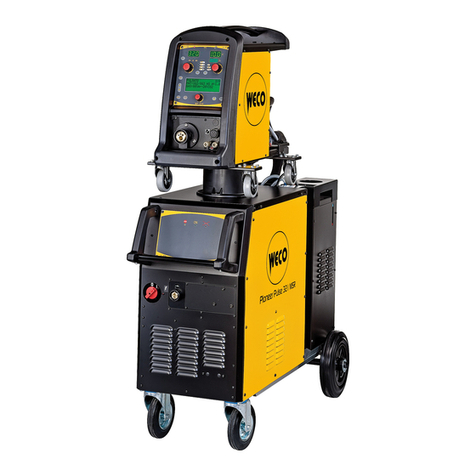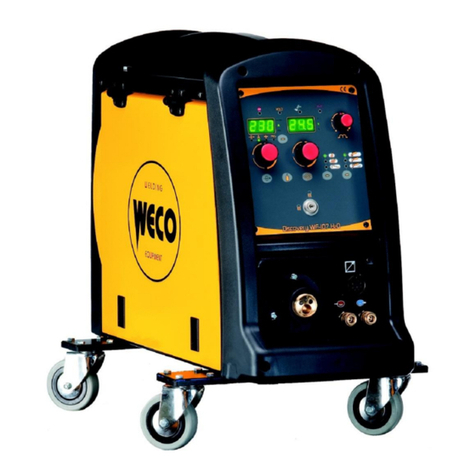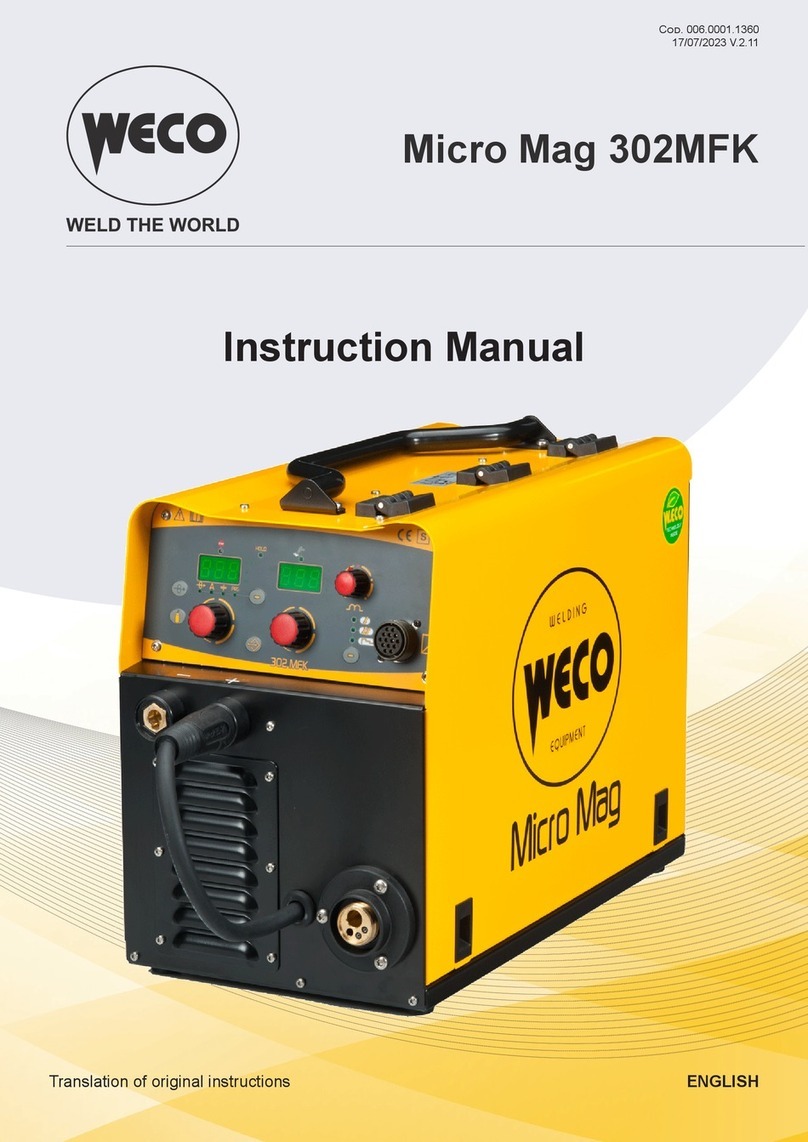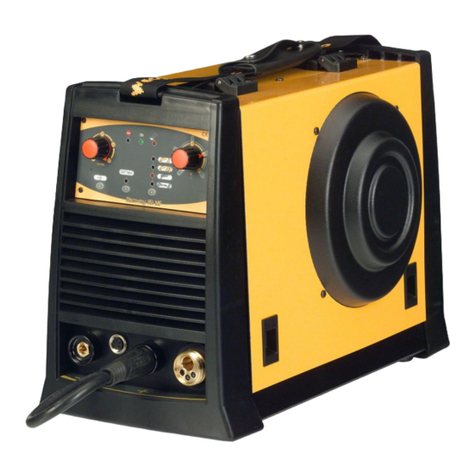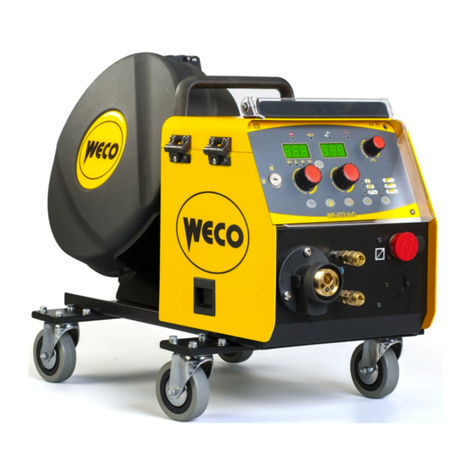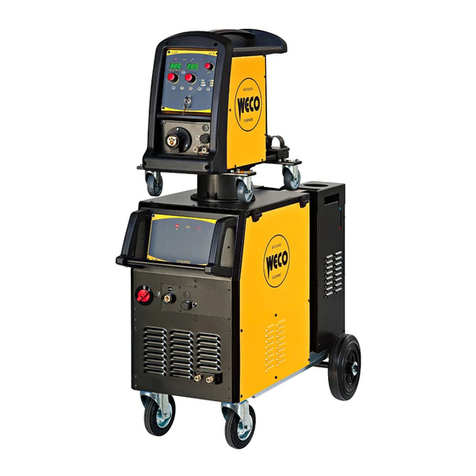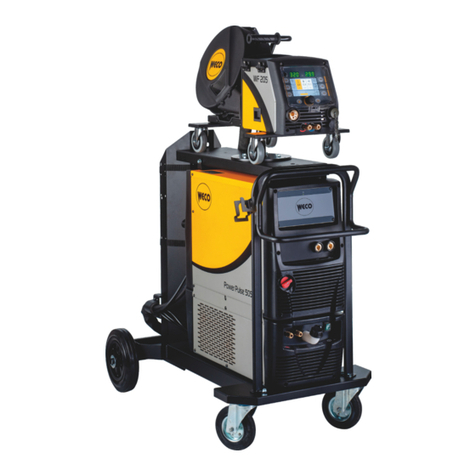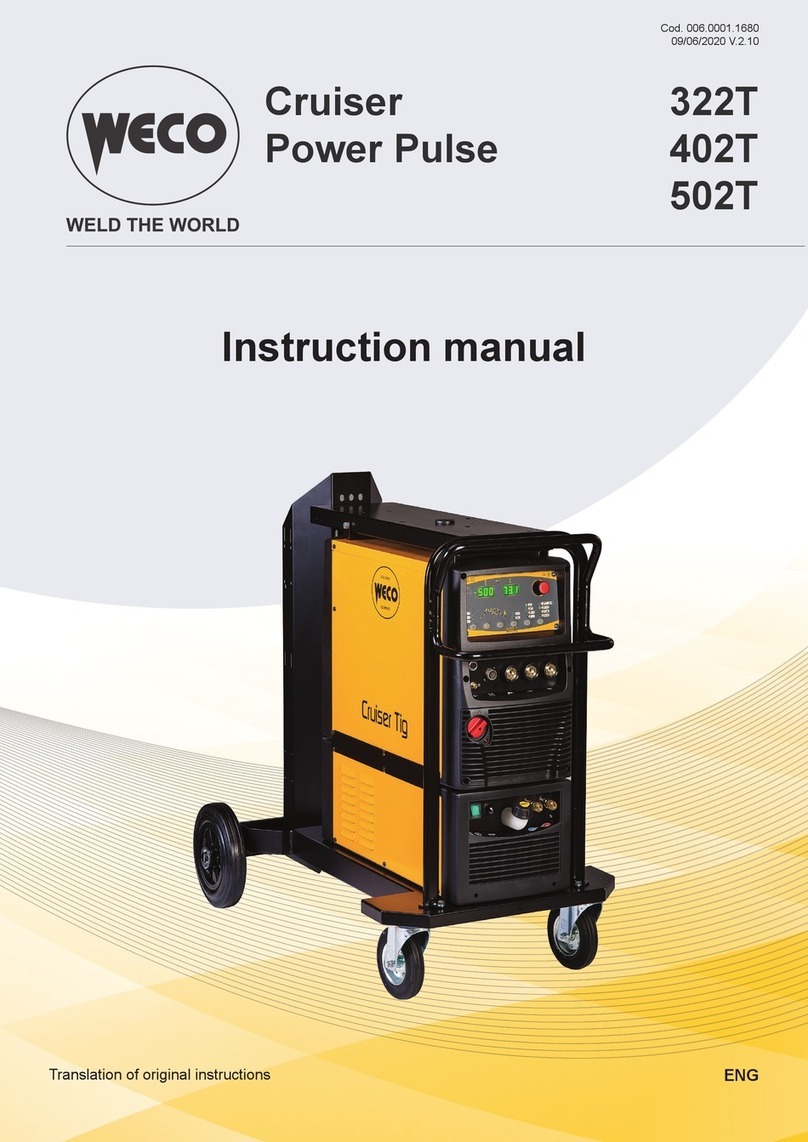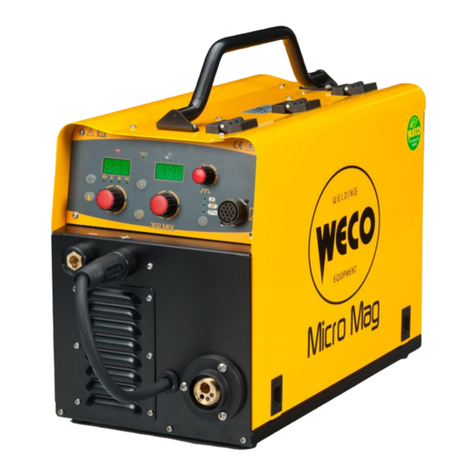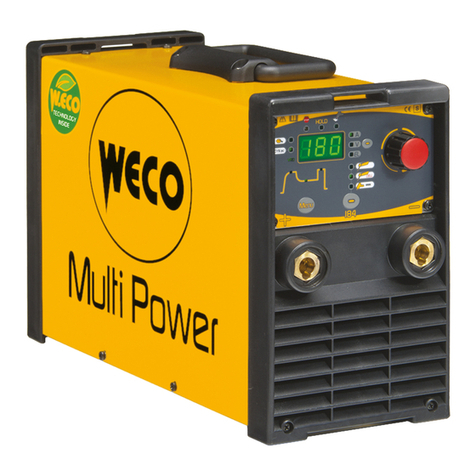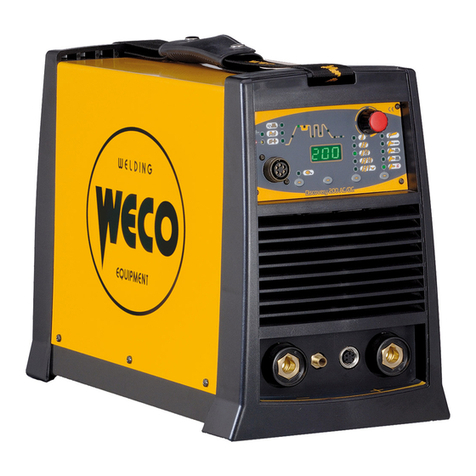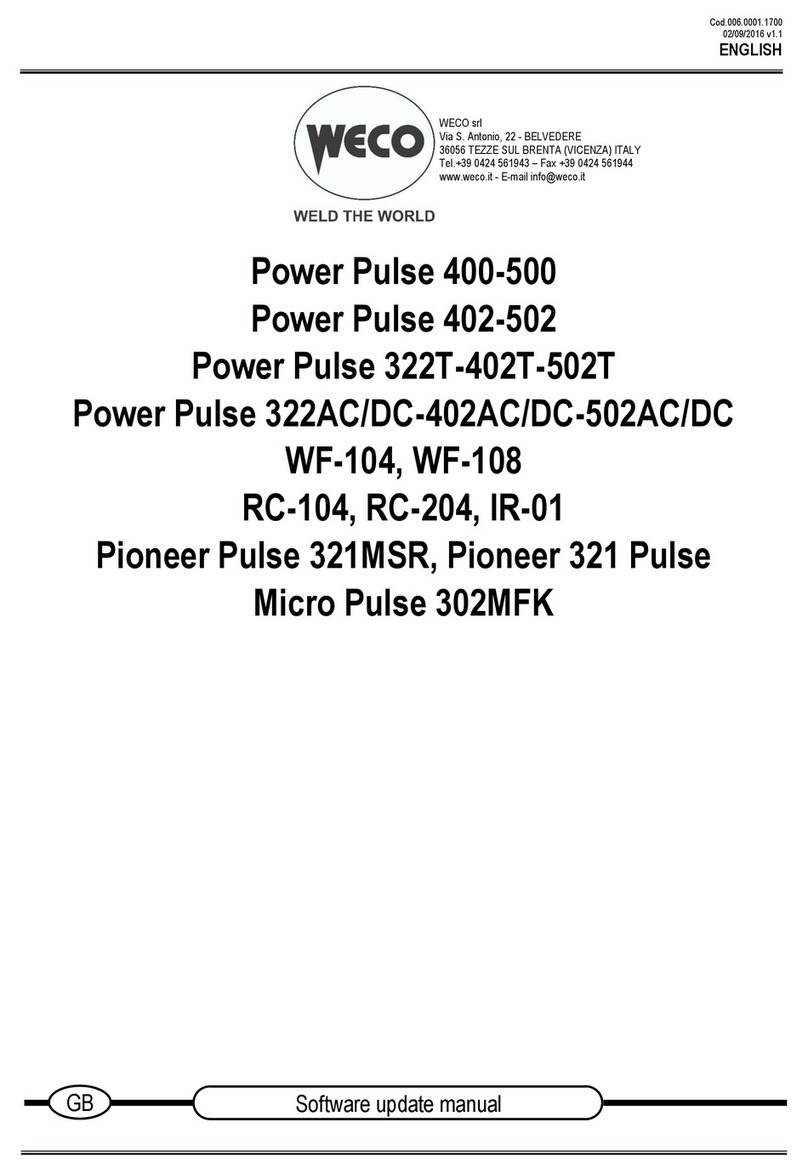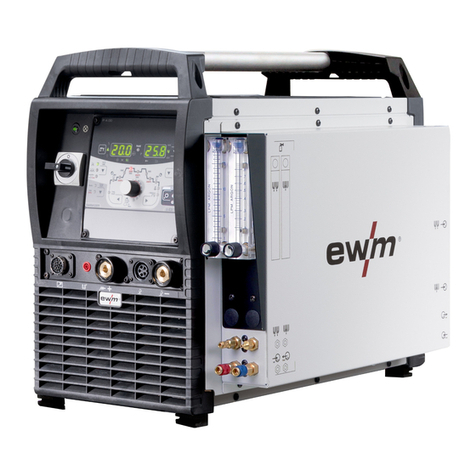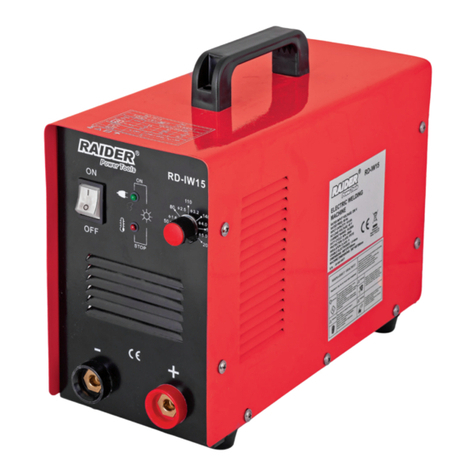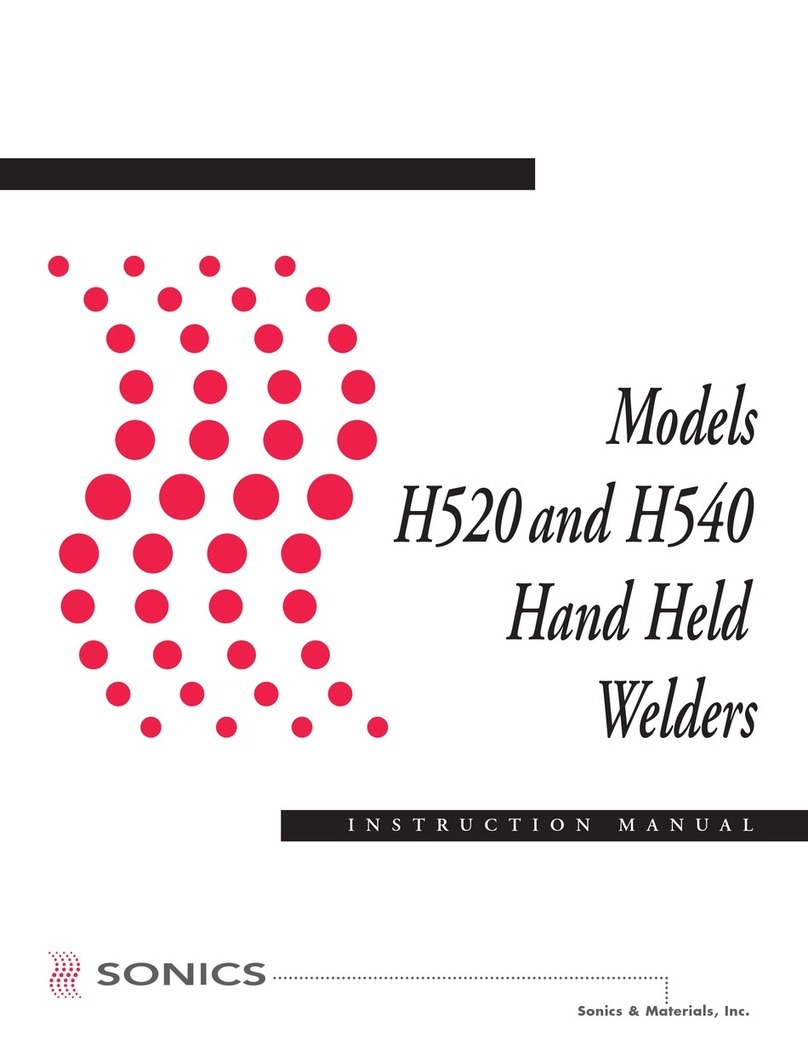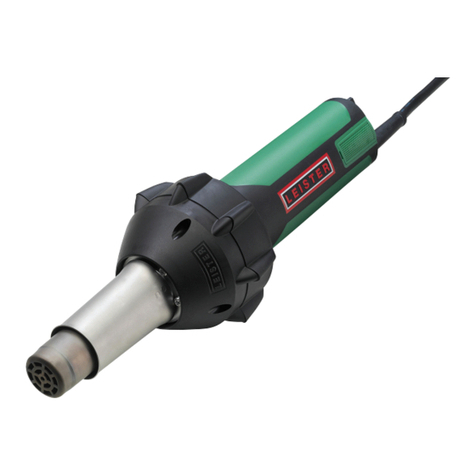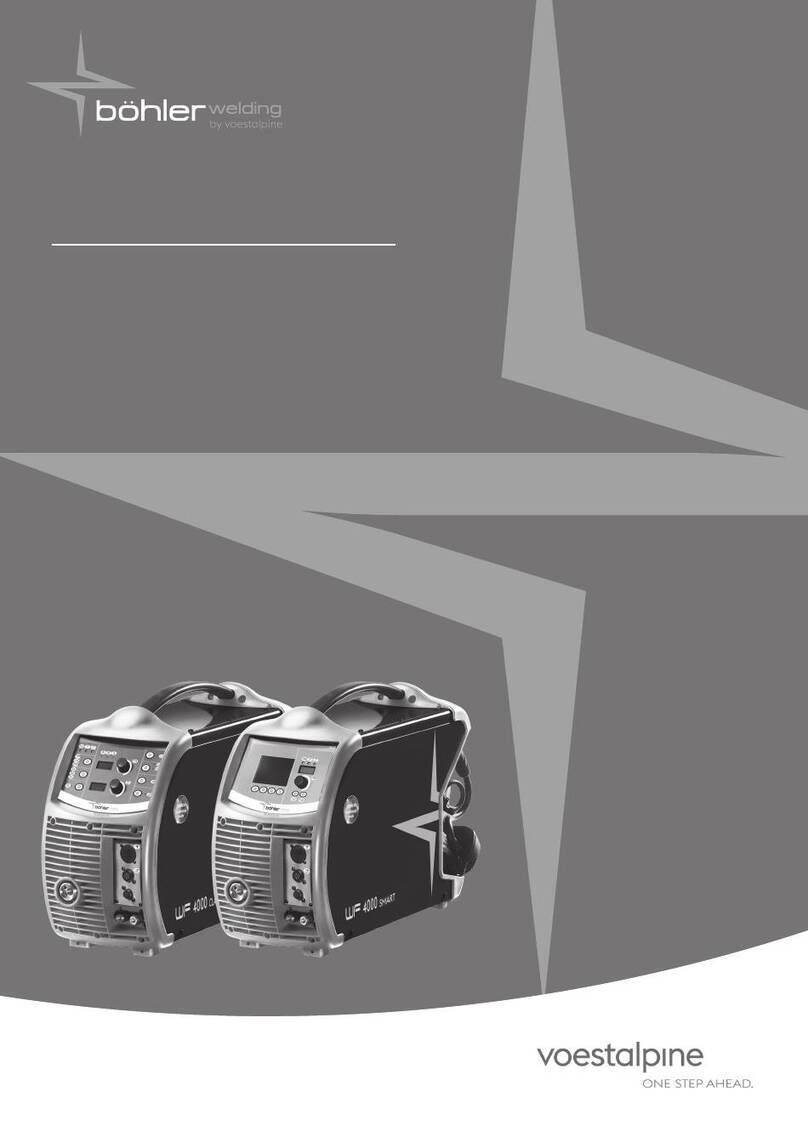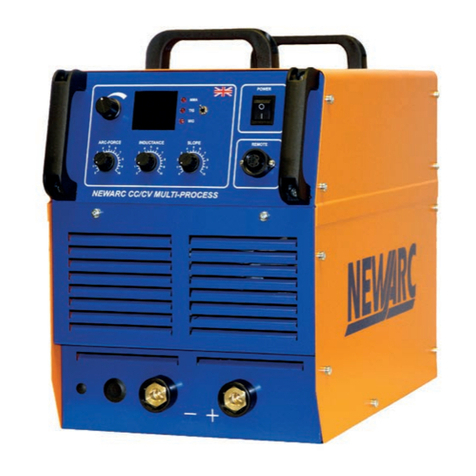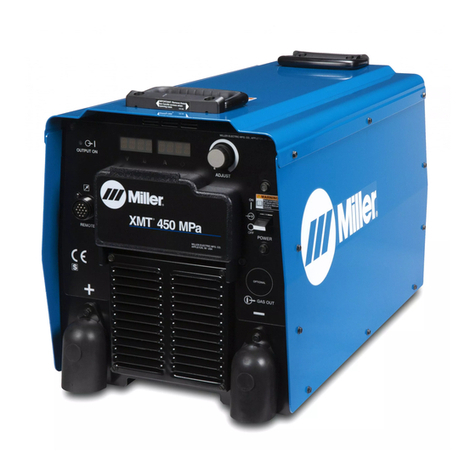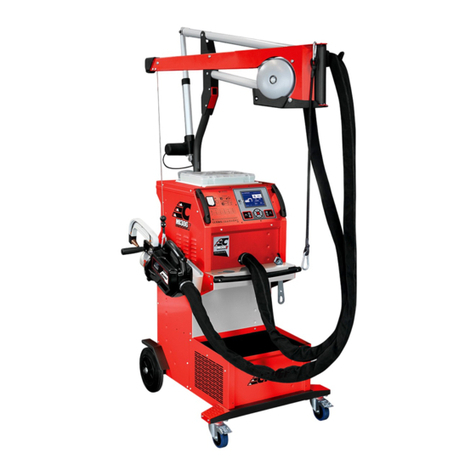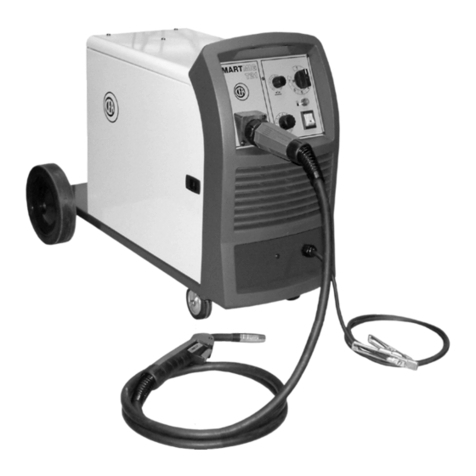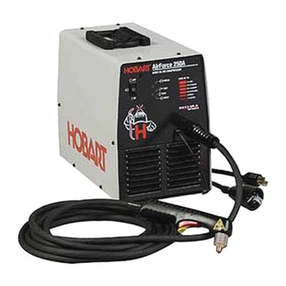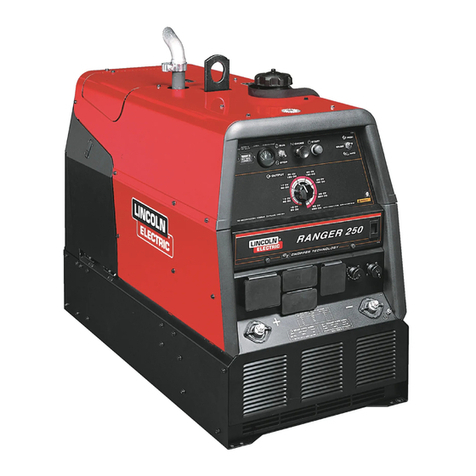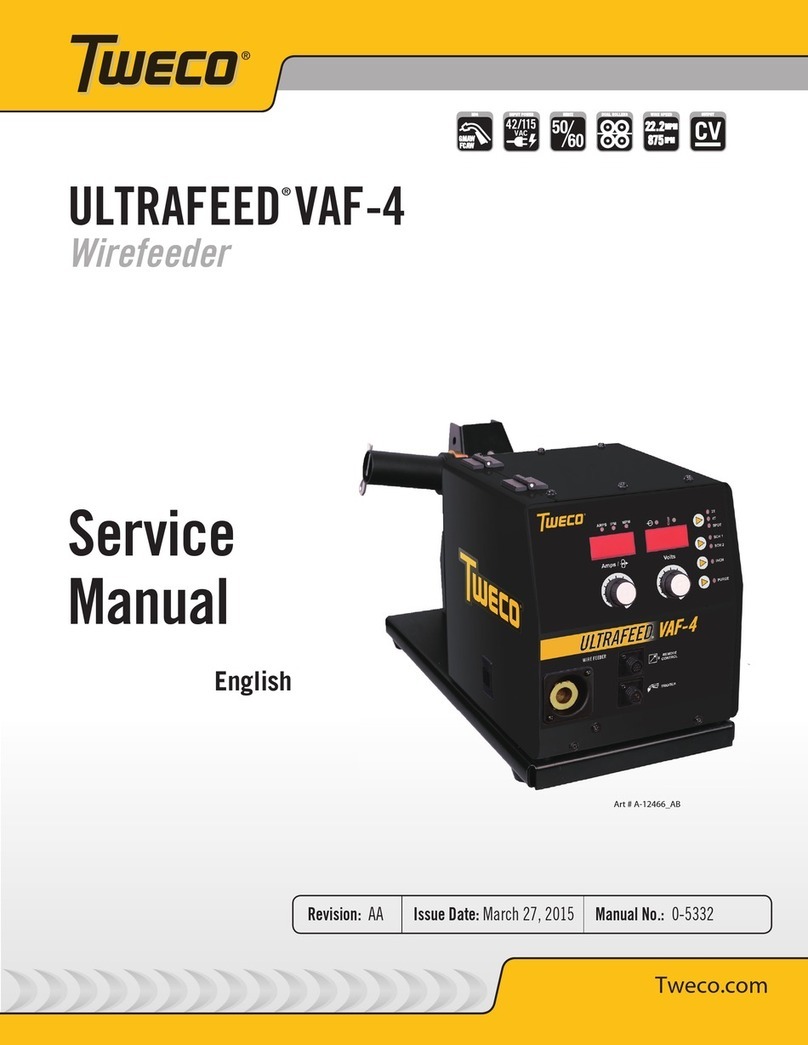
Discovery 35P
Discovery 45P
Cod.006.0001.0320
09/01/2014 v2.5
ENGLISH
2.3 REAR PANEL
Welding power source ON/OFF switch.
Total length (including internal part): 3
Number and cross section of wires: 3 x 2
(including internal part): 3
Number and cross section of wires: 4 x 1
Power plug type: not supplied
Knob of pressure reduction: it allows to adjust the air pressure.
WARNING!
Connect the air supply to
the snap action coupling. The machine must
be supplied with compressed air at a maximum pressure of 7 bars
(0.7 MPa): pressures over this can cause the pressure reduction unit
to explode.
If the air supply comes from a compressed air bottle, this must be
fitted with an auxiliary pressure regulator.
It is good practice to periodically check that in the bowl (B) of the
pressure reduction unit there are no traces of condensate and that the
relevant filter (A) is clean.
3PLASMA CUTTING
The generator must only be used for operations of cutting electrically
conductive materials (metals and their alloys) except for coated
metals or those containing lead Pb, cadmium Cd, zinc Zn, chrome Cr,
mercury Hg, beryllium Be and graphite if specific fume extraction
systems are not available.
Plasma cutting takes place due to the high temperatures generated by
a concentrated electric arc, and so very hazardous situations can rise.
Press the torch button to light the pilot arc. If, after 5 seconds, the
cutting is not started, the pilot arc goes out. To restrike it, release and
press the button again.
Keep the cutting arc in a position that is perpendicular to the surface
to be cut. To prevent contact with the melted material, we recommend
you work on a level surface. When the cut is complete, release the
button. The air continues to flow for about 45 seconds to allow the
torch itself to cool. It is best not to turn off the apparatus before this
time has elapsed.
In the case where you need to make holes or start a cut in the middle
of a piece, you should hold the torch at an angle, and straighten it up
slowly so that the melted metal does not spray onto the nozzle or
towards the operator. This operation must not be carried out when
cutting holes in pieces thicker than 3 mm. Do not hold the pilot arc lit
in air, so as not to increase consumption of the electrode and the
nozzle.
CUTTING PROBLEMS
Insufficient penetration
-Too high a speed. Ensure that the arc goes right to the bottom of
the piece to be cut, and that it is never inclined in the direction of
progression. This will prevent incorrect consumption of the nozzle.
-Excessive thickness of the piece.
-Terminal clamp not making a good electrical contact with the piece
to be cut.
-Nozzle and electrode worn.
-Cutting current too low.
The cutting arc goes out
-Nozzle and electrode worn.
-Air pressure too high.
-Supply voltage too low.
Inclined cut
-Switch off the generator and replace the nozzle and electrode.
Excessive wear of the consumables
-The air pressure is too low compared to that recommended.
If the air in the plant contains dampness and oil in considerable
quantities, it is best to use a drying filter to prevent excessive
oxidisation and wear on the consumables and damage to the torch.
Impurities present in the air encourage oxidisation of the electrode
and the nozzle, and can make it difficult to strike the pilot arc. If this
should happen, clean the end parts of the electrode and inside the
nozzle with very fine emery cloth.
Ensure that any new electrode and nozzle you are about to fit are
thoroughly cleaned and degreased.
To prevent damage to the torch, always use original spare parts.
3 4
B
A
Antwerpsesteenweg 949 9041 Gent - Oostakker
www.welda.be
T+32 (0)9 355 74 26
F+32 (0)9 355 92 01















